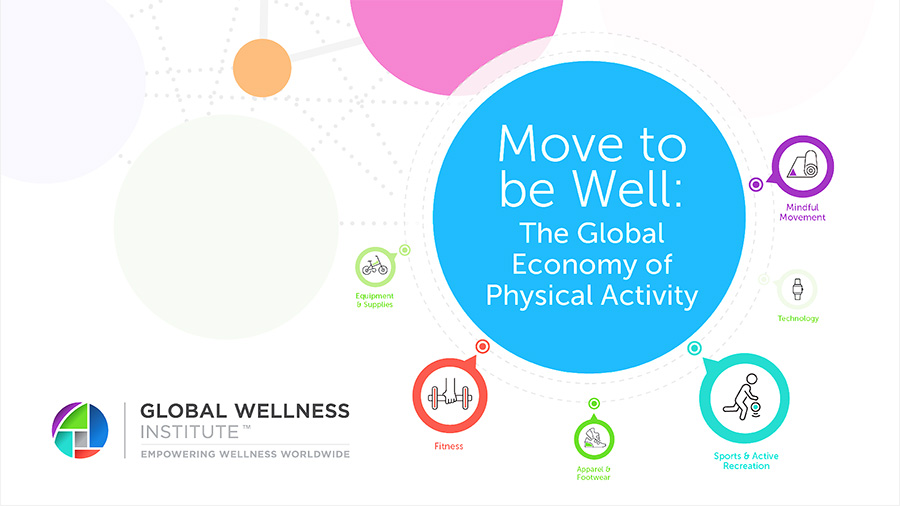Researchers at the nonprofit Global Wellness Institute (GWI), revealed new U.S. data from its recent study: “Move To Be Well: The Global Economy of Physical Activity.”
The data shows a sharp divide between the “haves and have-nots” in the United States—which leads to spending and innovation of the physical activity market worldwide but ranks just #20 in participation. GWI’s mission is to empower wellness worldwide by educating the public and private sectors about preventative health and wellness through research, industry initiatives and roundtables, wellnessevidence.com, and its Wellness Moonshot campaign.
GWI Chair and CEO Susie Ellis said, “These provocative insights prove how crucial it is for business leaders, policymakers and the wellness industry itself to encourage ongoing, daily participation in physical activity—not just for those who can afford it or have easy access to gym memberships and exercise classes. I was disappointed to learn that so much of the explosive success stories we see in the fitness market—from brands like Peloton, SoulCycle and CrossFit—are essentially the sales of more ‘product’ to the same individuals and not introducing more people to fitness.”
Slides highlighting where the U.S. leads and lags can be accessed here. The full report can be accessed here.
Among the findings:
- U.S. consumers spend more on physical activity than any other country in the world—$265 billion.
- The U.S. accounts for almost one-third of the global market.
- Not only does the U.S. rank first for overall market size, but it also ranks first among all six subsegments.
- U.S. consumers spend $810 per capita on physical activity—ranking second globally after Monaco.
- The U.S. market will grow by 5.2 percent annually over the next five years, which is faster than projected GDP growth (3.5 percent per the IMF). The U.S. will account for about 25 percent of global market growth during this period.
However, while the U.S. outspends all other nations, GWI senior researchers and report c=Co-authors Ophelia Yeung and Katherine Johnston noted that the nation has much to learn from other countries and cultures when it comes to encouraging daily physical activity (recreational or otherwise) among every demographic and socioeconomic level.
“While physical activity is a massive $264.6 billion commercial segment in the U.S., there is a major disconnect: sedentary lives, obesity and chronic disease are escalating right alongside the fitness market’s explosive growth,” said Yeung. “Sadly, America’s high spend doesn’t translate into high participation rates. In fact, the U.S. ranks 20th in physical activity participation (58 percent)—significantly behind leaders like #1 Australia, #2 Taiwan, #3 Norway, and #4 New Zealand, where participation ranks in the 80 percentiles.”











